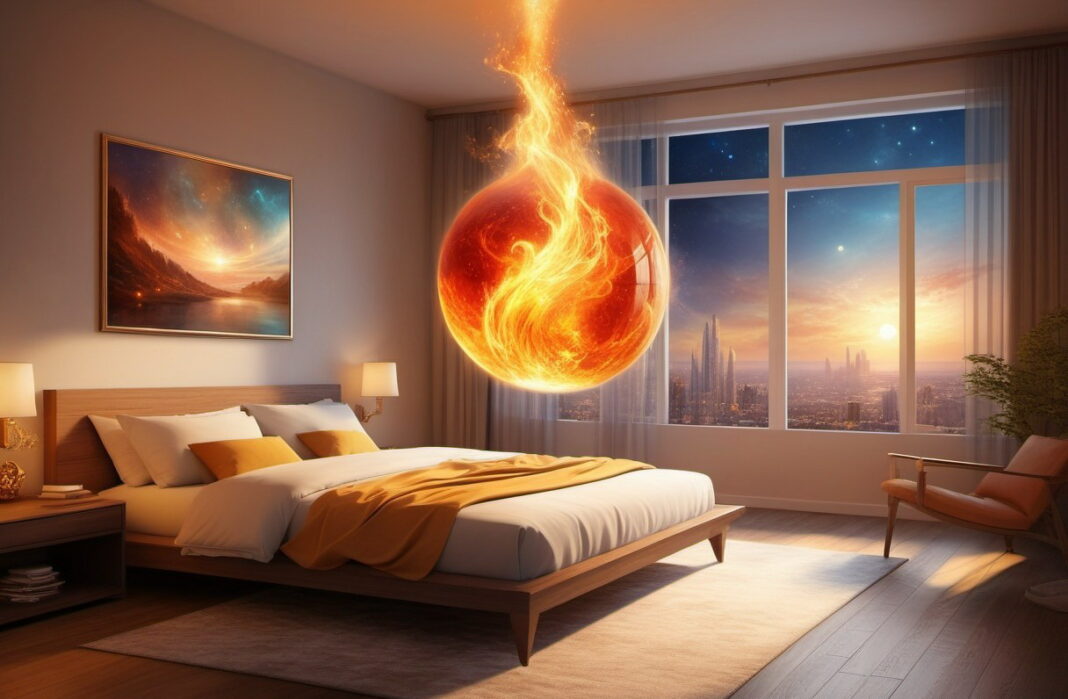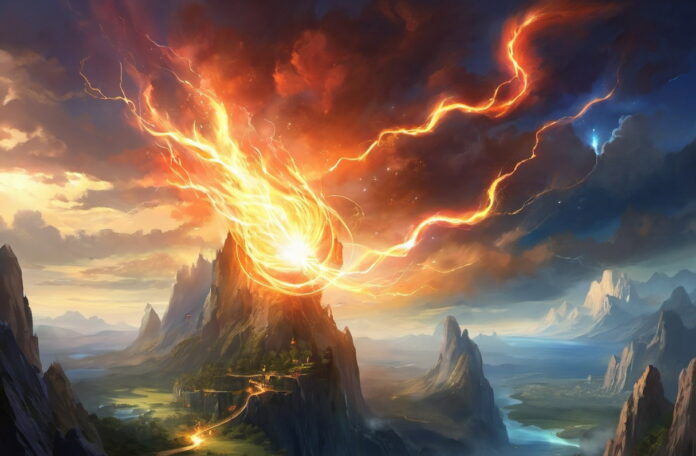Ball lightning, also known as fireball lightning, is a relatively rare and specific natural phenomenon. Sometimes, most often during a thunderstorm, some people observe glowing balls that move relatively slowly through space.
The diameter of the lightning balls can vary, usually ranging from 5 to 40 centimeters. However, there have been cases where ball lightning reached several meters in diameter. The duration of existence of these balls varies from a few seconds to 2-3 minutes. What is the nature of these mysterious phenomena?
Explanation of the phenomenon
Amazingly, even today, when physicists tell us about the origin of the Earth, the emergence of the Universe from the Big Bang, and black holes warping space and time, there is no sufficiently convincing theory of ball lightning.
Moreover, until recently, some scientists doubted their existence altogether. The fact is that in laboratory experiments, similar objects cannot be obtained.
In 2010, a theory was proposed that ball lightning is actually a form of hallucination caused by the influence of magnetic fields during a thunderstorm. However, this does not explain the lethal cases associated with this natural phenomenon.
In 2012, Chinese scientists accidentally recorded ball lightning and even determined its spectrum.
Some scientists, such as Kapitsa, explained the occurrence of ball lightning by special natural conditions that arise during a thunderstorm, in particular, the formation of a standing electromagnetic wave.
Other researchers believed that lightning represents a special state of matter, plasma, or the so-called Rydberg matter. Physicists also pay attention to the chemical processes associated with ball lightning.
It’s no coincidence that many observers report a strange smell accompanying this phenomenon. For example, Gladyshov believed that ball lightning is a specific form of nitrogen combustion.
Perhaps water molecules play a key role in the processes inside the fireballs, as during a thunderstorm with rain, the air is saturated with water vapor. Finally, some mathematicians propose their theories based on the effect of superconductivity. In any case, there is currently no definitive explanation for the nature of ball lightning.
How to behave in case of contact with ball lightning?
So what should you do if you witness this mysterious natural phenomenon? Be cautious, as ball lightning often becomes the cause of a person’s death. Treat the situation with all seriousness and do not try to immediately capture the unusual natural phenomenon on your phone.
Most observers recommend simply freezing and not moving when a fireball appears. In this case, it is less likely to fly towards you. If it is already approaching you, slowly and without sudden movements, move away from its path. Most often, ball lightning disappears within a couple of minutes, so it’s worth just waiting for it to disappear.
It is possible that the lightning has struck one of the surrounding people. In this case, they need help. However, do not rush to make sudden movements, as sometimes ball lightning appears not individually, but in groups. Make sure the danger has passed. After that, help the victim.
Most likely, he has a burn. You should remove clothing from the injured area, if necessary, simply cut it with a sharp object. Then, the burn area should be cooled. The easiest way to do this is with water. Next, the wound should be covered with a bandage, after disinfecting it beforehand. For this, you can use alcohol, strong alcoholic beverages, or cologne. However, green paint and iodine will interfere with the doctor’s ability to assess the severity of the burns.
In the worst case scenario, the person may be unconscious. Lay the patient in a horizontal position and elevate their legs, this will provide better blood flow to the brain. Ensure access to fresh air. Be sure to check the pulse of the victim! If there is no pulse, perform chest compressions and artificial respiration.
In any case, regardless of the condition of the victim, you should call an ambulance or transport them to the hospital yourself.
Cases of ball lightning. Ball lightning from the socket
This phenomenon is most often observed during thunderstorms, as well as when using electrical devices. Submariners often encounter ball lightning when working with batteries, and train engineers also report sightings. During thunderstorms, fireballs can literally emerge from electrical transmission poles and sockets.
Interesting facts:
1. **Duration and Size**: Ball lightning can vary in size, typically ranging from about 5 to 40 centimeters in diameter, although there have been reports of larger ones reaching several meters across. Their lifespan varies as well, lasting anywhere from a few seconds to 2-3 minutes.
2. **Formation**: Despite ongoing research, the exact mechanism behind the formation of ball lightning remains unclear. Some theories suggest it may be a form of hallucination caused by magnetic fields during thunderstorms, while others propose it could be related to electromagnetic waves or plasma.
3. **Rare Observations**: Ball lightning sightings are relatively rare and occur sporadically. They are often observed during thunderstorms but can also appear indoors, emerging from electrical outlets or appliances.
4. **Temperature**: Ball lightning is known to be extremely hot, with temperatures reaching thousands of degrees Celsius. This intense heat contributes to its ability to cause burns and damage upon contact.
5. **Appearance**: Witnesses describe ball lightning as luminous spheres or orbs, often glowing in various colors such as red, orange, yellow, or white. They may float or move erratically, sometimes bouncing off surfaces or even passing through walls.
6. **Electromagnetic Effects**: Ball lightning is associated with electromagnetic phenomena. It has been reported to interfere with electrical equipment, cause power outages, and leave behind magnetic residue after dissipating.
7. **Historical Accounts**: Reports of ball lightning date back centuries, with documented sightings mentioned in historical records and folklore from around the world. However, due to its elusive nature, scientific study of ball lightning has been challenging.
8. **Scientific Interest**: Despite its mysterious nature, ball lightning has garnered significant scientific interest. Researchers continue to study it in laboratories and conduct experiments to better understand its origins and behavior.
9. **Safety Precautions**: While ball lightning is fascinating to observe, it can pose a danger to people and property. It’s important to exercise caution and avoid direct contact if you encounter it, as it can cause burns, electrical shock, or explosions.
10. **Unexplained Phenomenon**: Ball lightning remains one of the most intriguing and unexplained natural phenomena. Its elusive nature and unpredictable behavior continue to captivate scientists and enthusiasts alike, making it a subject of ongoing research and speculation.
